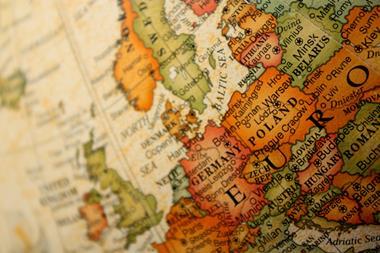Austrian Pensionskassen could decide to cut pension benefits sharply from 2023 as a result of losses recorded this year, as the government tries to fend off the negative impact of inflation, which has inflamed political debate.
Austrian pension funds have recorded negative returns of 9.73% as of the end of September, with assets falling by around €2.7bn, PEKABE, the association representing beneficiaries’ interests, said.
As a result, for around 120,000 pension fund benefit recipients, the protracted losses due to market turmoil this year mean a reduction of the level of pensions of 15% from next year, depending on the actuarial interest rate, it added.
Taking into account the current rate of inflation, this would result in a loss of purchasing power of 25%.
According to the association, this expected negative development this year would also impact those entitled to pensions in the future who are still working, since their future pension benefits will be significantly reduced.
Inflation and pensions light up political debate
According to the latest forecast by the Oesterreichische Nationalbank (OeNB), the inflation rate in Austria will rise to 8.5% in 2022, followed by a drop to 6.4% in 2023 and 3.7% in 2024.
Beneficiaries of lower pensions could see an increase in the amount of pensions of 5.8% next year, and a one-off payment of up to €500 to compensate for inflation, according to draft law to increase pensions for 2023 introduced by the Social Committee of the National Council, the lower house of the Austrian Parliament, earlier this month.
The compensation will be increase by €20 for a total of €80, or by 7.74%, to just over €1,110 from the beginning of next year. Beneficiaries with higher pensions, on the other hand, will have to accept cuts in terms of compensation for rising levels of inflation, according to the draft.
The legislative proposal is based on an idea by the coalition government of the Greens and the Austrian People’s Party (ÖVP) to lift lower pensions through a statutory pension increase of 5.8% and a one-off payment of up to €500 in March next year, depending on the amount of pensions received.
The maximum amount of €500 will be paid to retirees with a monthly gross pension in the range of €1,667-€2,000, while for pensions above that amount the one-off payment falls gradually to zero, and anyone receiving less than €1,667 gross pension will benefit from a one-off payment of 30% of that amount.
According to the Greens, the pension package will cost €4bn.
Gerald Loacker, member of parliement (MP) for the New Austria and Liberal Forum NEOS party, was relieved that “the absurd demands” of pensioners’ associations had not been taken into account by the colaition government’s proposal.
However, €4bn is a considerable sum, especially since pensioners’ incomes have recently risen faster than the employed incomes, which might be unsustainable in the long term, he said.
For the Social Democratic Party (SPÖ) and the right-wing Freedom Party FPÖ, however, the planned increase of the level of pensions for next year is too low, calling instead for an increase in pensions by up to 10%.
PEKABE calls responsibility on the government for the “deficiencies in the pension fund system”.
Peter Weller, the chair of PEKABE, reiterated the necessity of a second pillar pension system reform, adding that “the destruction of a quarter of pension benefits through the stock market [turmoil] and inflation in just one year is dramatic, and many retirees are overwhelmed by this situation,” calling to find a political solution to the issue quickly.
The latest digital edition of IPE’s magazine is now available














No comments yet